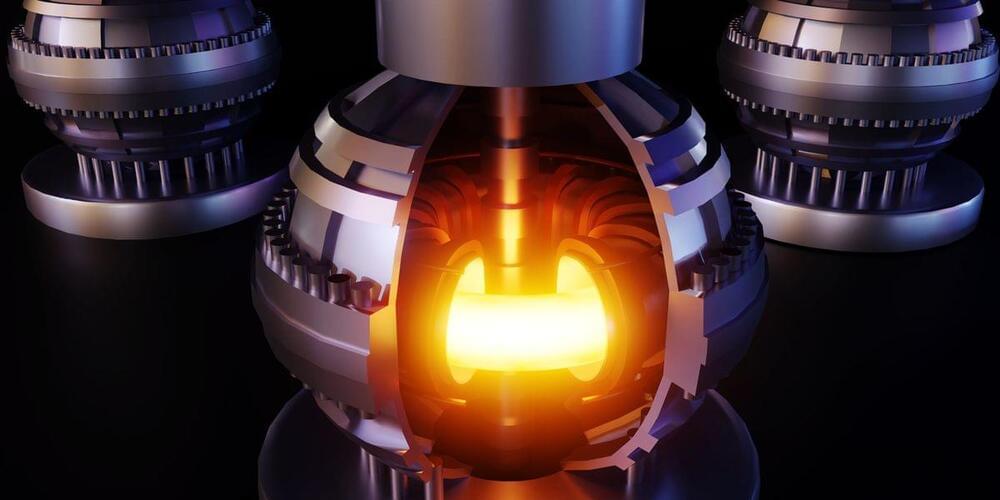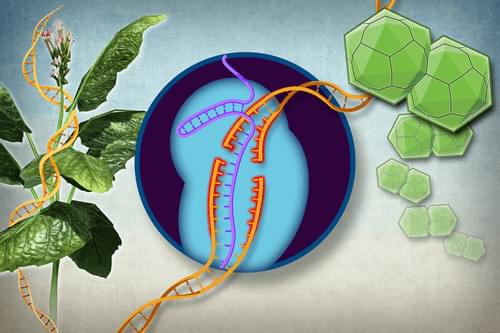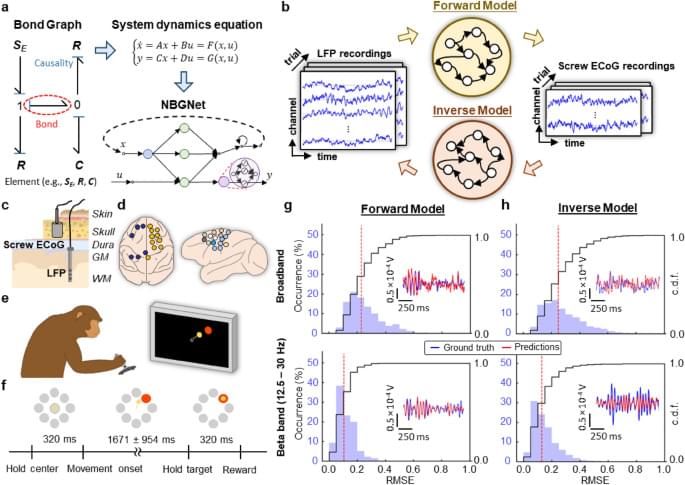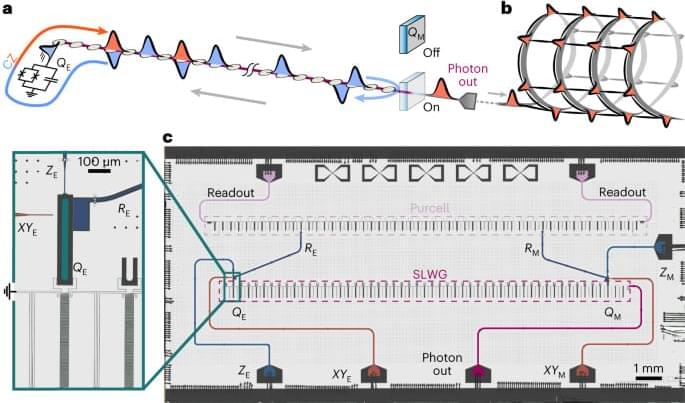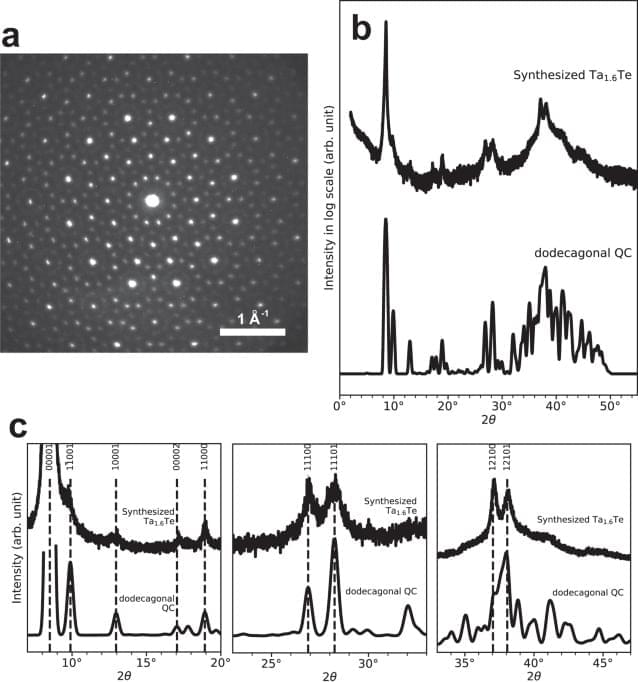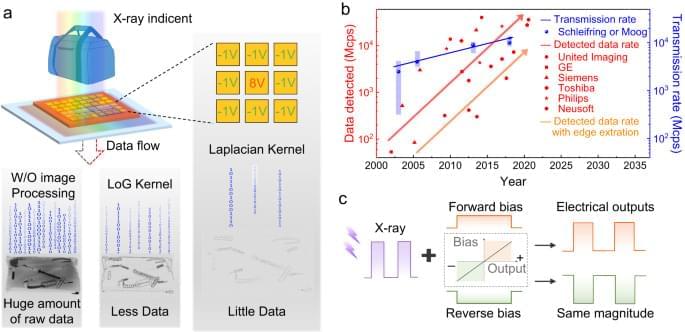Some of the faintest objects ever observed suggest that small galaxies get the credit for clearing the ‘fog’ pervading the early cosmos.
“Even primary school students and old farmers can master gene editing,” says [Southern University of Science and Technology, or SUSTech] scientist Zhu Jian-Kang, who has helped develop a new approach that could greatly simplify the difficult and time-consuming process of editing genes in plants.
While conventional methods of heritable gene editing in plants often take months, and in some cases up to a year, this innovative approach could reduce the process to about two weeks, according to [Cao Xuesong, a scientist at SUSTech and a member of Zhu’s team], who is also the first author of the study.
Chang, YJ., Chen, YI., Yeh, HC. et al. Neurobiologically realistic neural network enables cross-scale modeling of neural dynamics. Sci Rep 14, 5,145 (2024). https://doi.org/10.1038/s41598-024-54593-w.
Cluster states made from multiple photons with a special entanglement structure are a useful resource for quantum technologies. Two-dimensional cluster states of microwave photons have now been deterministically generated using a superconducting circuit.
You may never have heard of magnetars, but they are, in a nutshell an exotic type of neutron star whose magnetic field is around a trillion times stronger than the Earth’s.
To illustrate their strength, if you were to get any closer to a magnetar than about 1,000km (600 miles) away, your body would be totally destroyed.
Its unimaginably powerful field would tear electrons away from your atoms, converting you into a cloud of monatomic ions – single atoms without electrons– as EarthSkynotes.
Recent theoretical studies36,37,38 have revealed that quasicrystalline superconductors exhibit several unconventional behaviors that are typically not observed in other known superconductors in periodic and disordered systems, thus opening a new field in the research of superconductivity. Nagai36 has studied superconducting tight-binding models of Penrose and Ammann – Beenker lattices (typical two-dimensional quasicrystalline lattices) and demonstrated an intrinsic vortex pinning due to spatially inhomogeneous superconducting order parameter. Such an inhomogeneous order parameter arises from the quasicrystalline structural order, and therefore, the vortex pinning occurs without an impurity or defect. Sakai et al37. have investigated quasicrystalline superconductivity using an attractive Hubbard model on a Penrose lattice using the real-space dynamical mean-field theory. Unconventional spatially-extended Cooper pairs were formed; the sum of the momenta of the Cooper pair electrons was nonzero, in contrast to the zero total momentum of the Cooper pair in the conventional BCS superconductivity. Such a nonzero total momentum of the Cooper pair is also observed for the Fulde – Ferrell – Larkin – Ovchinnikov (FFLO) state previously proposed for periodic systems39,40,41,42. However, the unconventional Cooper pairing in the model QC is completely different from the FFLO state because the Cooper pairing occurs under no magnetic field. In addition, under a high magnetic field, a state similar to the FFLO state is formed in the model QC38. However, this state is also different from the conventional FFLO state in periodic systems and forms a fractal-like spatial pattern of the oscillating superconducting order parameter, which is compatible with the self-similar structural order that is possessed by the QCs. As mentioned above, many interesting features are theoretically expected for superconducting QCs, which are yet to be demonstrated experimentally, and the Ta1.6 Te dodecagonal QC phase in the present study offers a precious platform for it.
In conclusion, polygrain Ta1.6 Te dodecagonal QC samples were fabricated by reaction sintering. Careful phase identification of the sample was performed by electron and powder X-ray diffraction experiments and diffraction-profile simulations. The samples were subjected to electrical resistivity, magnetic susceptibility, and specific heat measurements. The results unconditionally validate the occurrence of bulk superconductivity at a \({T}_{{{{{{\rm{c}}}}}}}\) of ~1 K. This is the first example of superconductivity in thermodynamically stable QCs. These findings are expected to motivate further investigations into the physical properties of vdW layered quasicrystals as well as two-dimensional quasicrystals. In particular, the dodecagonal QC provides a valuable platform for the experimental demonstration of the unique superconductivity theoretically predicted for QCs.
A new Chinese study claims that machine gun-armed robot dogs are as accurate as trained human marksmen. If true, we could be about to witness a revolution of sorts in urban warfare.
The study conducted by Xu Cheng and his team “demonstrates the feasibility of a legged strike platform,” reports The South China Morning Post (SCMP).
The study’s findings were published in the peer-reviewed journal The Chinese Journal of Engineering last month. Cheng is a professor of mechanical engineering at the Nanjing University of Science and Technology.
Former CIA agent, CEO and author Rupal Patel reveals the time management strategy that sets her up for success throughout the week.
In-sensor computing requires detectors with polarity reconfigurability and linear responsivity. Pang et al. report a CsPbBr3 perovskite single crystal X-ray detector for edge extraction imaging with a data compression ratio of 46.4% and classification task with an accuracy of 100%.

